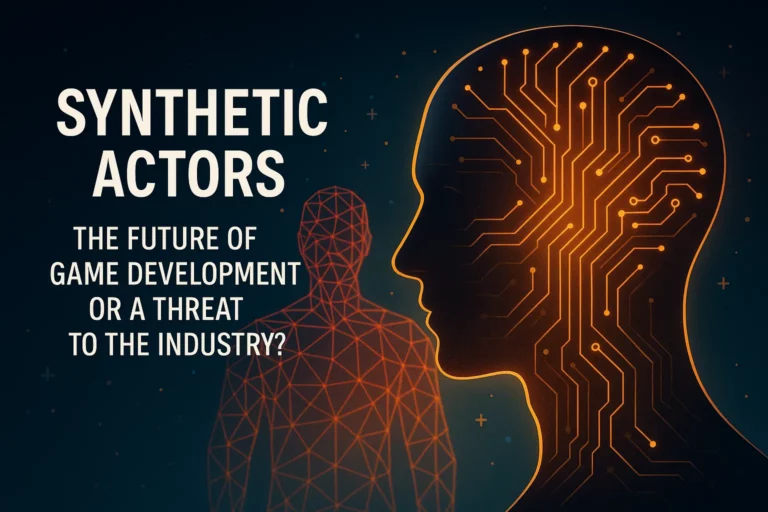Artificial intelligence and deepfake technologies have come a long way from niche experiments. They’re now rewriting the rules of how we build and play games. What used to be the domain of developers—dialogues, character behavior, even story progression—is now being handled, at least in part, by algorithms. AI-generated media is no longer a novelty; it’s quickly becoming the backbone of interactive entertainment.
This shift is not just about creating more content faster—it’s about creating different experiences. Games are moving toward personalization, procedural storytelling, and synthetic interaction at a scale we’ve never seen before.
When AI Becomes a Game Designer
For years, artificial intelligence in games meant smarter enemies or more responsive non-playable characters (NPCs). But the landscape has evolved dramatically. New machine learning models, such as GANs (Generative Adversarial Networks) and transformers like GPT, allow games to generate content that reacts and adapts in real time.
Let’s break down some practical examples already emerging in game development:
- Facial animations created by image synthesis
- Voice acting generated through AI voice cloning
- NPC dialogues that change based on player behavior
- Procedurally generated quests tailored to each playthrough
- Dynamic environments that evolve with in-game decisions
All of these elements are becoming more common—even in indie games. Deepfake tech, in particular, plays a big role in animation and audio, making it possible to generate lifelike characters and emotional expressions with minimal human input.
The Role of Aviator by Spribe
One interesting example of modern game mechanics enhanced by data and AI comes from Aviator, a crash-style game developed by Spribe. The core concept is simple: players place bets on a rising airplane and must cash out before it flies away. While it doesn’t use deepfake tech directly, Aviator showcases how analytics and machine learning can inform user behavior and keep players engaged.
Spribe implements real-time multiplayer features, in-game chat, and adaptive UI elements that evolve based on user interaction. While the gameplay is minimalist, the backend suggests a scalable approach to how synthetic technologies might eventually shape even the simplest gaming experiences.
Aviator isn’t groundbreaking in terms of AI-generated content—but it’s a clear sign that even casual games are moving in this direction.
Gamifying Synthetic Identity
Now imagine games that do more than adapt to your actions. Imagine games that adapt to you—your voice, your face, your emotions.
This is where synthetic identity comes into play. We’re already seeing AI streamers on platforms like Twitch, and mods for games like Skyrim and GTA that use deepfake voiceovers to replace flat character lines with more emotional, human-like dialogue.
With deepfake tools improving rapidly, we’re heading toward experiences where:
- Players control avatars that mirror their real facial expressions
- Voice chat is enhanced by real-time AI translation and vocal synthesis
- In-game characters reflect not just roleplay, but actual personality cues
The result? Games become mirrors of the player—shaped by them, responding to them, and evolving with them.
What Lies Ahead?
As the lines between synthetic media and game development continue to blur, several trends are becoming more likely:
- AI-generated avatars in multiplayer experiences
- Custom synthetic voices for every player
- AI commentators for live tournaments and esports
- Fully generated storylines, characters, and missions
But this also brings serious questions. What happens if someone creates an avatar using someone else’s likeness? How do we regulate synthetic voice impersonations? Where do we draw the ethical line when AI becomes a co-author of the experience?
These aren’t distant hypotheticals—they’re issues developers will need to address in the very near future.ing issues that developers, platforms, and players must navigate. The same tools that open doors to incredible immersion also raise red flags around consent, authenticity, and digital rights.


